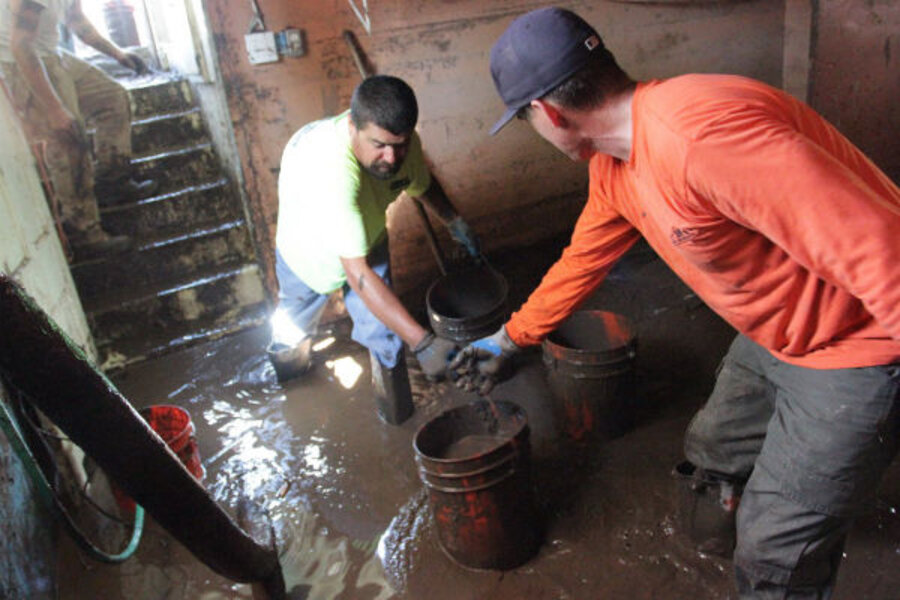During heavy rain events, basements can quickly become a soggy mess. Even a structurally sound foundation can take on several inches of murky water if heavy rains overwhelm municipal sewer systems, says Patrick Martin, a licensed sewer contractor and owner of Expert Flood Control in Chicago. "If too much storm water washes into the [municipal] sewer at once it can back up through the homeowner's line," he said. Septic systems can also result in a back flow of sewage if the system suffers damage from storms.
Homeowners can install flood prevention systems designed to restrict sewer flow to just one direction so it can only flow out of the home, but those systems range in cost from $7000 to $9000, Mr. Martin says.
Heavy rains can also cause the water table to rise underground and can lead to water seepage into the home. While seepage is less damaging than sewer overflow, it can still be a more than a nuisance and can later result in growth of mold. Homebuyers should always hire a reputable inspector and specifically ask them to check for signs of water damage and compromises in the foundation, Martin says.
Renters can look for telltale signs that there have been leaks in the past, including water stains on the walls and floor, a white powdery substance on brick that forms when acid in the water mixes with lime in the mortar, and wood that looks water beaten. Martin suggests that freshly painted walls or floors and patches of cement where the basement ceiling meets the floor could indicate that someone has tried to cover up evidence of previous water damage.





